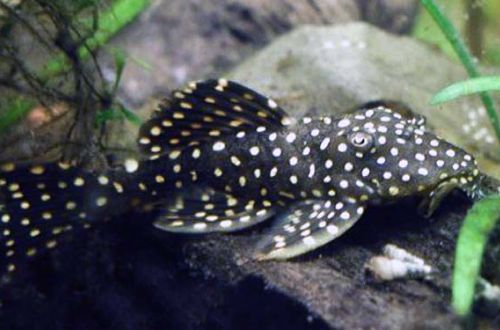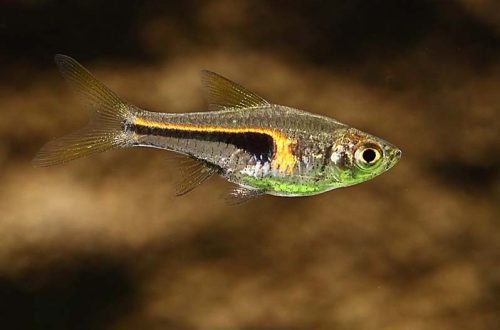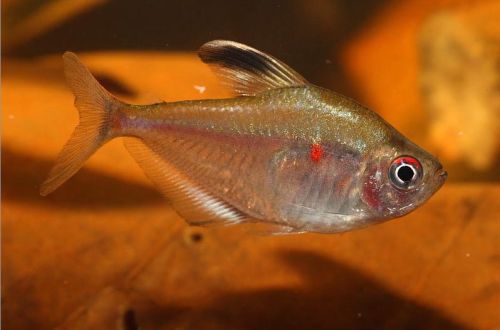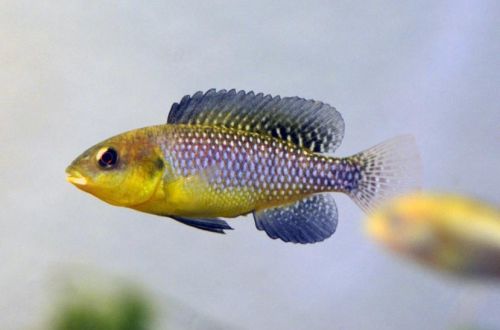
alkaline cichlid
The alkaline cichlid, scientific name Alcolapia alcalica, belongs to the Cichlidae family. The main feature of this fish is the ability to live in an environment that will be fatal for most species: high temperature, alkaline and highly mineralized water composition. Rarely found in home aquariums due to specific conditions.

Contents
Habitat
It comes from the African continent from the region on the border of Tanzania and Kenya between lakes Natron and Shompole. Inhabits associated rivers and streams, also found in some lagoons and wetlands of these lakes. The habitat is characterized by high salinity and alkaline waters, which are caused by numerous hot springs. Fish are often found in brackish water with temperatures around 50°C.
The lakes themselves are unique natural reservoirs. They have a very high salinity, many times higher than that of the sea. During the dry period, a thick salt crust forms along the banks, and the color of the water becomes red due to the active development of the colony of Artemia crustaceans.
Brief information:
- The volume of the aquarium – from 100 liters.
- Temperature – 28-38°C
- Value pH — 8.0–10.0
- Water hardness – 10–36 GH
- Substrate type – sandy
- Lighting – moderate
- Brackish water – acceptable in a concentration of 10 gr. per 1 liter of water
- Water movement is weak
- The size of the fish is about 11 cm.
- Nutrition – small sinking food based on plant components
- Temperament – conditionally peaceful
- Keeping in a harem with one male and several females
Description
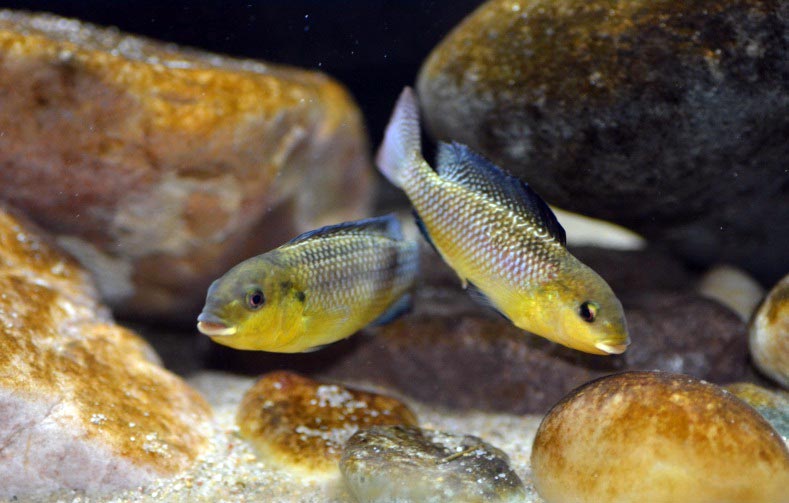
Adults reach a length of about 11 cm. The color is yellowish. The males have dark fins, and the scales on the body have blue tints. Females look less bright, the predominant colors are gray.
Food
In nature, the basis of the diet are algae and zooplankton. In the aquarium, accordingly, food rich in herbal supplements, such as dry flakes, granules of a suitable size, should be fed. Fish will not refuse live or frozen foods such as brine shrimp.
Maintenance and care, arrangement of the aquarium
The optimal size of the aquarium for a group of 3-4 fish starts from 100 liters. The design uses sandy soil with several large stones, boulders. There is no need for live plants as they are not typical of the Alkaline Cichlid’s natural habitat.
The most difficult thing when keeping this species of cichlids is to ensure the mineral composition of the water, characteristic of Lake Natron. Although the fish are able to acclimate to milder conditions over time, they will still need an increased alkaline water composition of at least 8.0 pH and high carbonate hardness. When buying, be sure to clarify the conditions in which the fish were kept and try to recreate them in a home aquarium.
Behavior and Compatibility
Males are territorial and jealously guard their area at the bottom from rivals. Given the small size of adult fish in a spacious aquarium, several males may well get along. Females are more peaceful and calmly relate to each other. Due to the special requirements for the composition of water, it is unlikely that it will be possible to select compatible species. For most fish, such living conditions will be fatal.
Breeding / breeding
Under favorable conditions, breeding is quite possible if several fish of both sexes are kept simultaneously. With the onset of the mating season, males dig small holes at the bottom where they actively invite females. When the female accepts courtship, she lays her eggs in the hole and waits for them to be fertilized. Then he picks up eggs in his mouth and swims away in search of a new male. As a result, offspring from different partners may appear in one clutch.
The eggs develop while in the mouth of the female, who wears them for about two weeks until the fry begin to emerge. A similar mechanism for protecting offspring has developed evolutionarily as a reaction to an external aggressive environment. It is not unique and is inherent in many members of the Cichlid family.
Fish diseases
The main cause of diseases lies in the conditions of detention, if they go beyond the permissible range, then immunity suppression inevitably occurs and the fish becomes susceptible to various infections that are inevitably present in the environment. If the first suspicions arise that the fish is sick, the first step is to check the water parameters and the presence of dangerous concentrations of nitrogen cycle products. Restoration of normal/suitable conditions often promotes healing. However, in some cases, medical treatment is indispensable. Read more about symptoms and treatments in the Aquarium Fish Diseases section.



